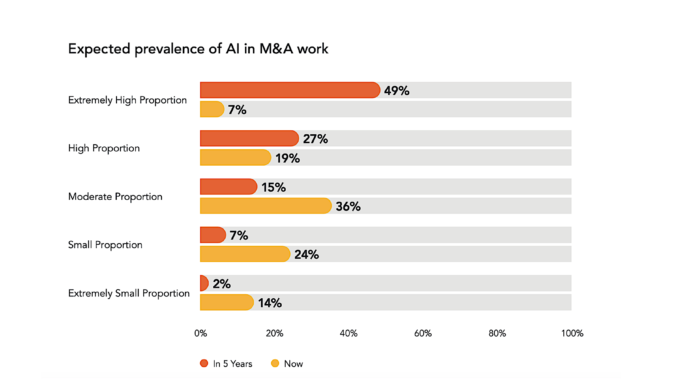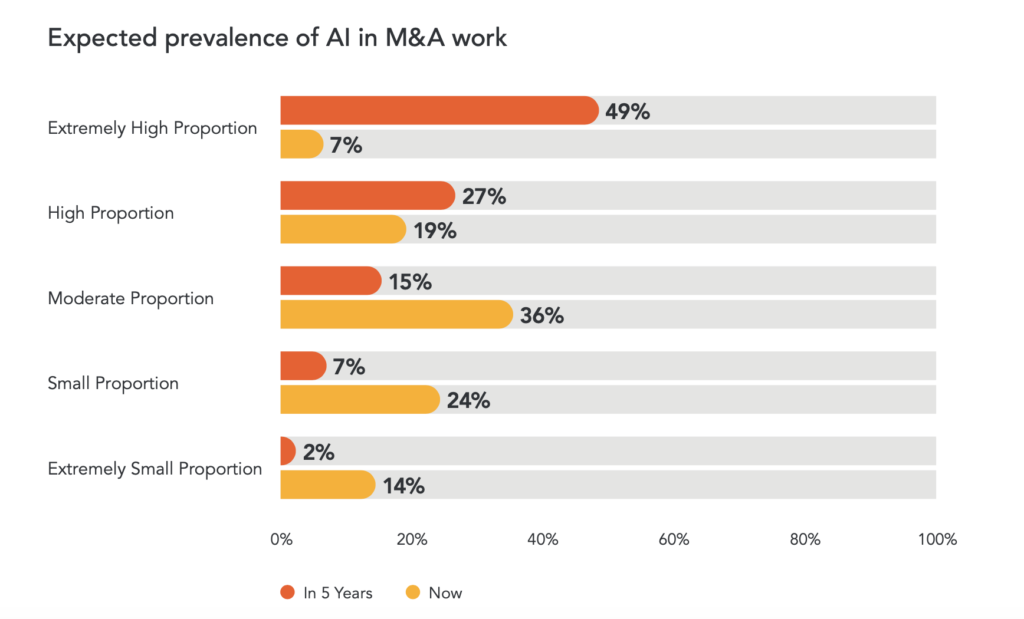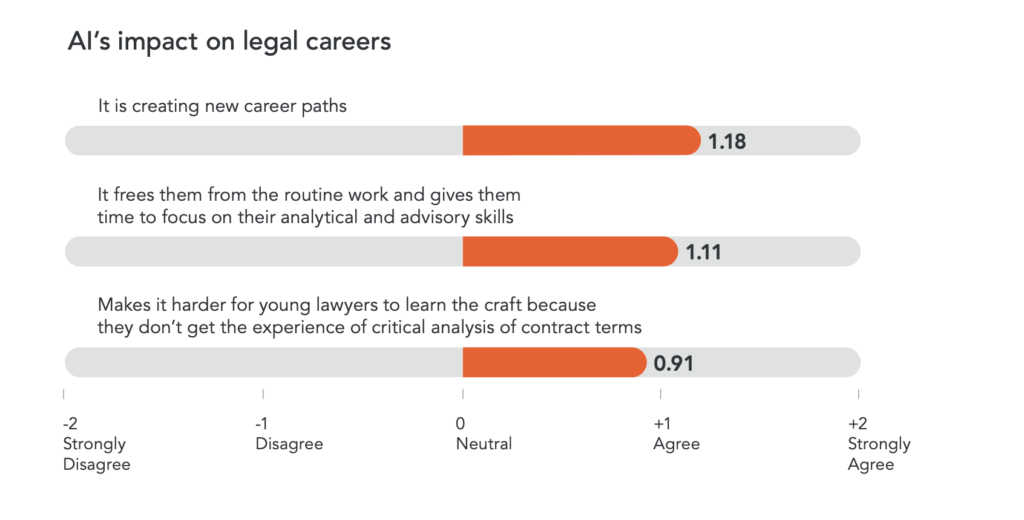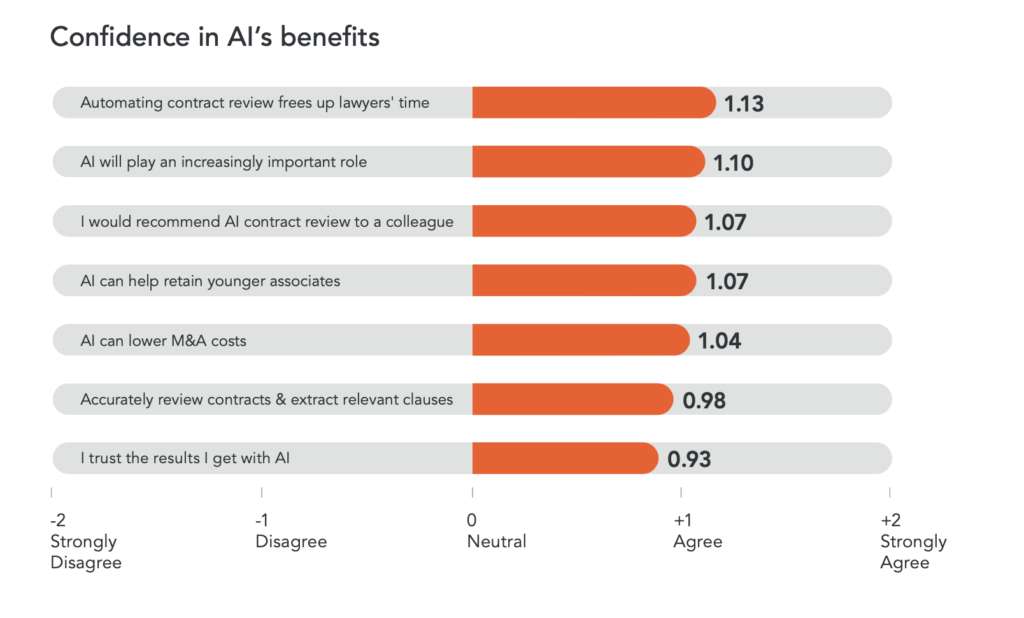
A survey and report by Litera, looking especially at M&A, has found that lawyers believe that AI – i.e. NLP analysis – will become ‘ubiquitous’ and see much greater use in the next five years in areas such as due diligence.
200 M&A lawyers in firms of over 80 attorneys, in three countries, US, UK, and Canada, were surveyed. As you can see in the chart below, 76% of lawyers said that NLP tools would be used in an ‘extremely high proportion’ or a ‘high proportion’ of M&A work in the next five years.
At present the same categories totalled 26% – which may sound like a small amount, but if you went back five years to 2017, only a few partners at larger law firms were using this approach to speed up deals.

Another aspect is AI and legal careers, with the old idea of ‘the end of lawyers’ hanging over the questions. In the next chart lawyers reported ‘AI frees them up from routine work and gives them time to focus on analytical and advisory skills’ – and that’s good to see.
However, one negative that many also agreed with was that automating process work like this ‘makes it harder for young lawyers to learn the craft’. To which some might say: is bulk review during a client engagement (i.e. paid for by the client) really the best training method for talented young deal lawyers?

More positively the next chart found that lawyers agree that NLP tools can help to retain young lawyers – which creates an interesting conflict, i.e. lawyers think AI makes training lawyers harder, but AI also helps to keep young lawyers in their jobs – presumably because they do less routine work and so don’t burn out as quickly.

There is much more in the report, authored by David Curle, but the key takeaway is that the use of automation software, centred on NLP to crunch data in documents, is becoming increasingly normal.
That said, let’s not get carried away. Artificial Lawyer has spoken to plenty of large law firms that are quite open about the fact that they don’t always use the NLP tools they have – instead they use them when there is a meeting of several factors: economic, time pressure, resource pressure, and client demands.
Those factors don’t always drive the use of Kira, Luminance, eBrevia and others – but equally, and as the data shows, increasingly they do drive their use. Moreover, as clients get used to this approach and partners get used to providing it – along with the things they have to handle to provide it, e.g. testing and training – then the more it all just normalises.
Whether it will become truly ubiquitous, i.e. used in every possible scenario by every firm that could use NLP doc analysis, remains to be seen. But either way, its use is way more prevalent, accepted, and understood than back when this site launched in June 2016!